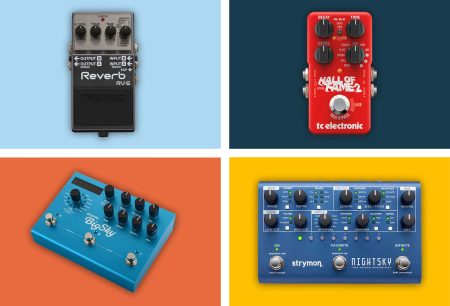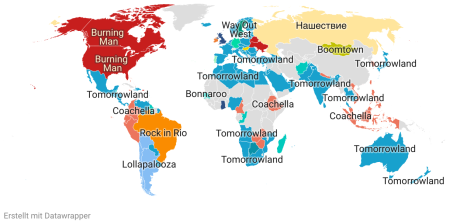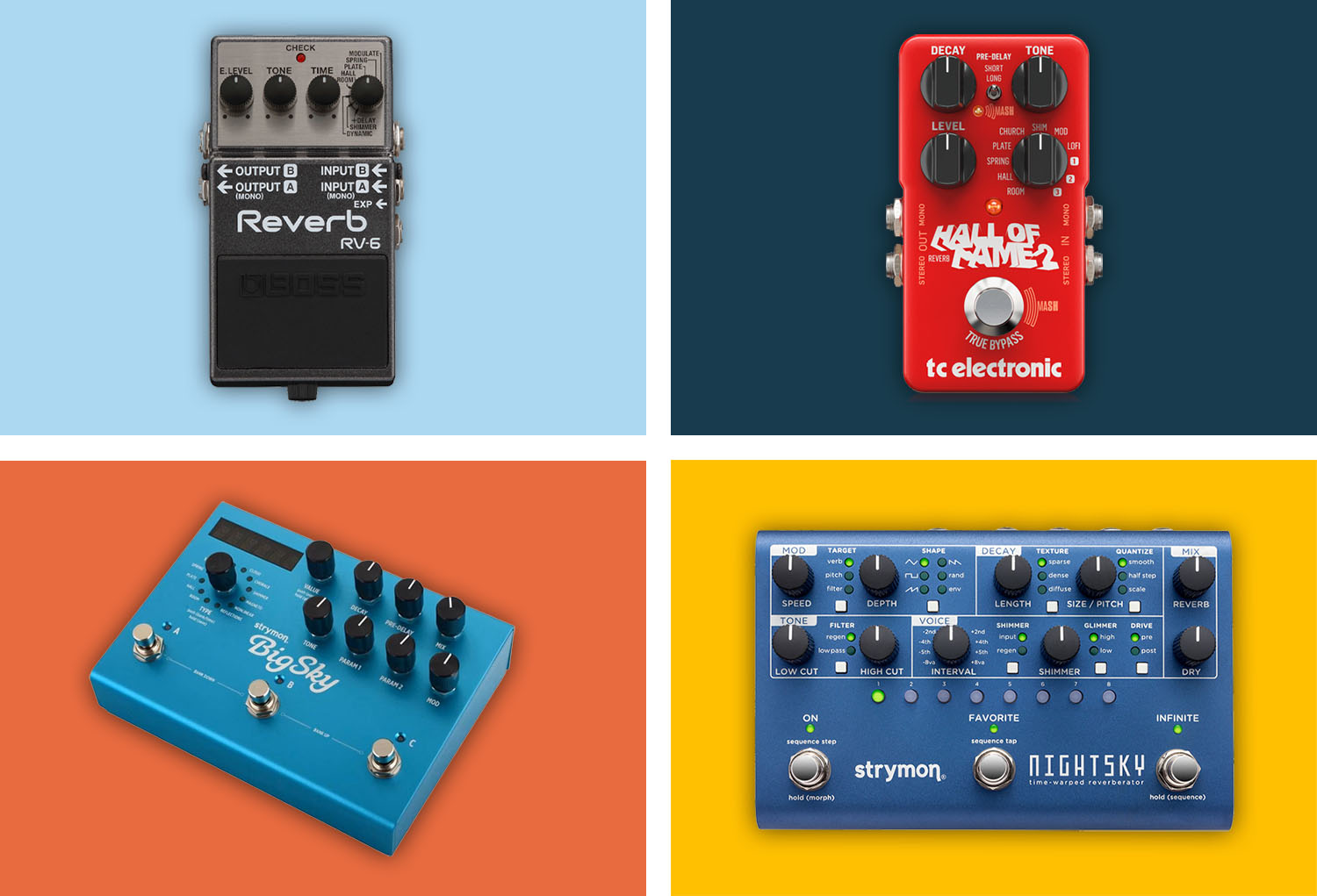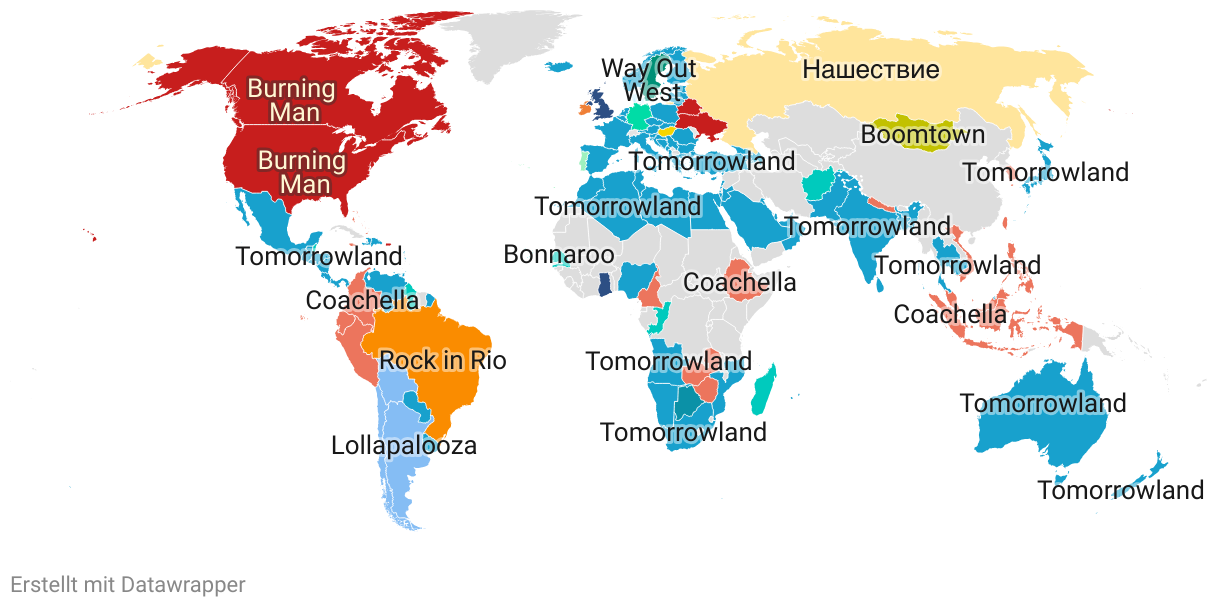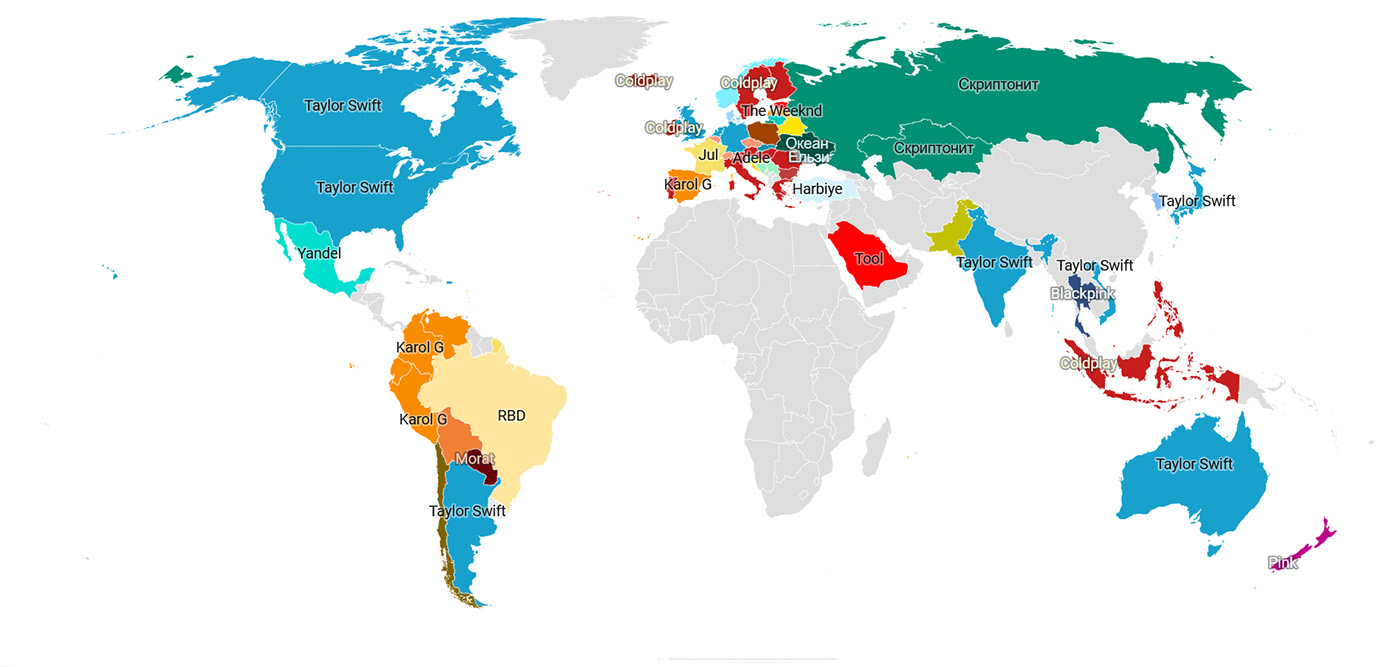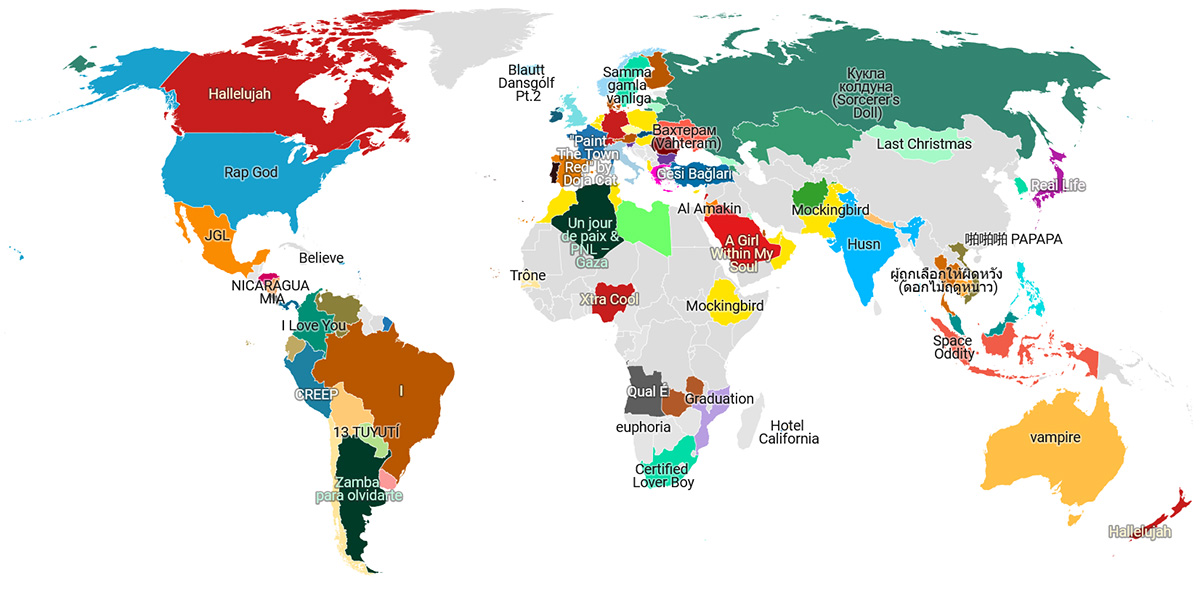Sheet music is the written language of music, and percussion sheet music is no different. They are used to write down the music of percussion instruments in a way that any musician can read and interpret. Assuming, of course, that you know this "language", i.e. that you can read sheet music.
To read drum notation, you first need to know the different note values (quarter note, eighth note, sixteenth note, etc.). Then you need to know where each drum is located on the staff - similar to the melody notes (C,D,E,F,G,A,B) on the melody instruments, each line and space on the staff corresponds to a single drum on the percussion.
Related articles:
- The best drum sets for beginners
- The best electronic drum sets for beginners and professionals
- How to setup your drum set: beginner's guide (with photos)
- The 11 best drum sets and e-drums for kids
What is sheet music for drums?
Drum notation allows musicians to interpret and write scores for percussion instruments. Like other musical notations, it indicates tempo, rhythm, and sometimes dynamics, but its presentation is specially adapted to the needs of percussion.
In drum notation, each line or space on the staff represents a specific instrument in the percussion section, such as bass drum, snare, hi-hat, or the various toms and cymbals. The low drums are written in the lower part of the staff, and the high drums in the upper part.
Various symbols and notation styles also indicate how a particular percussion instrument should be struck-whether with a stick, brush, or hands-as well as the type of stroke, such as a normal stroke, rimshot, or harmonics for cymbals. Dynamic markings and tempo changes are also often notated to give the drummer further instructions.
Important: Since there is no worldwide standardization for drum notation, the exact symbols and their meanings vary from region to region, genre to genre, and even teacher to teacher.
How to read drum sheet music
These notes are read from left to right, as in English. The staff consists of 5 lines and 4 spaces in which the notes can be placed. They can also be placed outside the staff with the help of guide lines, but this is rather unusual.
A drum score is characterized by the drum clef, which is simply two thick bars.

This staff contains various notes that look almost exactly like regular musical notes. They have a note head, a note stem, and can have a flag, just like musical notes.
But one thing is different: the percussion notes of the cymbals have a cross as a notehead.

Since the bass drum is usually the lowest drum in the entire kit, its note is the lowest on the entire staff. It is usually placed in the first space between the first and second lines.
The snare drum is the centerpiece of many drum beats and is represented by a filled circle located on the third space of the staff, where C is normally located on treble clef instruments. Its central role in the drum kit is emphasized by this prominent placement.
The note of the closed hi-hathas an "X" as its notehead, since the hi-hat is also a cymbal. It is normally placed above the last/fifth line of the staff. However, when the hi-hat is played open, the note gets a circle around the X.
The floor tom is usually located in the second row and is therefore the second lowest note on the staff. This makes sense because the floor tom is the lowest drum after the bass drum.
The two stand toms are usually notated in the last space (tom 1) and in the fourth line of the staff (tom 2). These toms produce relatively high notes, certainly higher than the floor tom and the snare, and are therefore notated above these drums.
The ride cymbal is usually placed on the first auxiliary line above the staff. If the drum kit has more than one crash cymbal, they are notated one after the other above the first auxiliary line. The higher the crash cymbal sounds, the higher it is notated (the pitch is directly related to the size of the cymbal - the smaller, the higher).
The crash cymbal is usually placed on the first auxiliary line above the staff. If the drum kit has several crash cymbals, these are notated one after the other above the first auxiliary line. The higher the crash cymbal sounds, the higher it is notated (the pitch depends directly on the size of the cymbal - the smaller, the higher).
Time signature
➔ Click here for the detailed article on bars and time signatures
A time signature in a musical context is a fundamental aspect of music theory that is especially important to drummers. It determines how many beats are contained in a bar and which note value forms the basic beat. The time signature is written at the beginning of a piece of music and looks like a fraction, such as 4/4, 3/4, or 6/8.
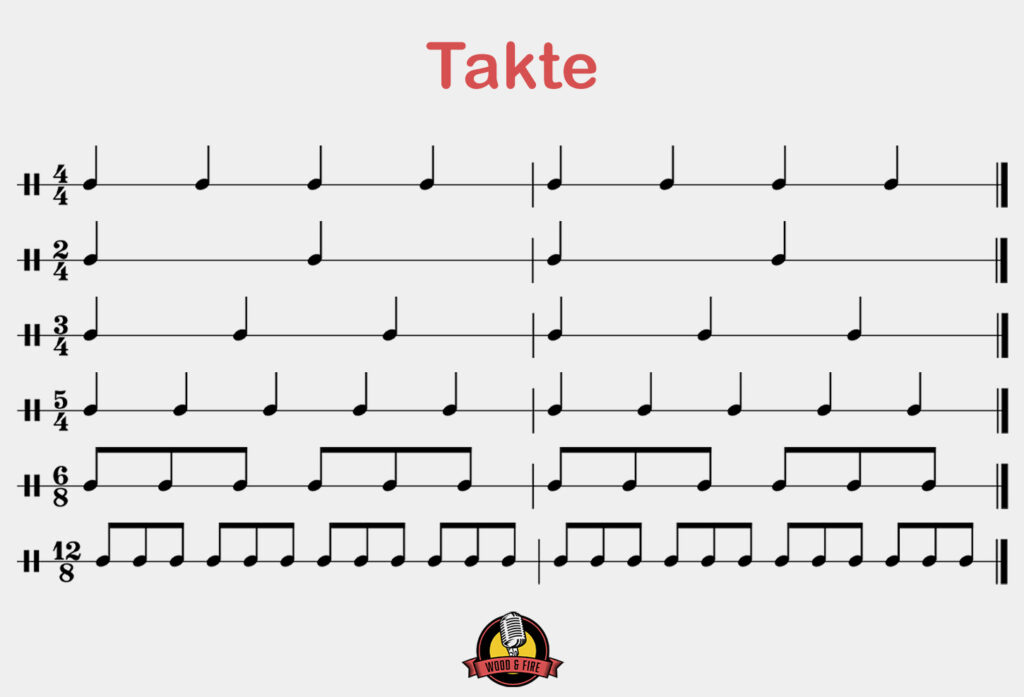
The upper numerical value of the time signature indicates the number of beats per bar. For example, 4/4 means four beats per bar, while 3/4 means three beats per bar.
The lower numerical value indicates which note type counts as a beat. In 4/4 time, the quarter note is the basic beat, in 6/8 time the eighth note.
Time signature is crucial for drummers because it provides the basic framework for the rhythm and the timing in a piece. It determines how the drummer maintains the tempo, sets accents and works together with other instruments.
Understanding and being able to play different time signatures is essential to being able to accompany different pieces flexibly and musically. For example, a drum pattern in 4/4 time will sound completely different than a drum pattern in 6/8 time.
Note values
➔ Click here for the detailed article on note values
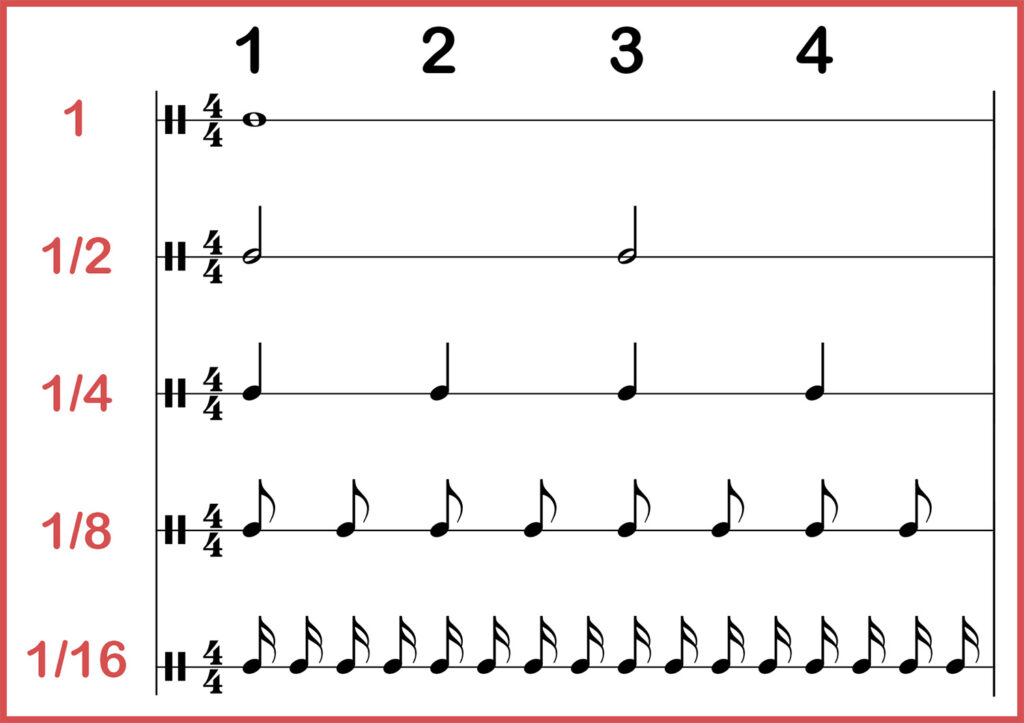
Note values are an essential part of music theory and are very important to drummers. They indicate how long a note or beat is held. Basically, note values determine the duration of each beat a drummer plays. Here are some of the most common note values:
- Whole note: This is the longest standard note. In 4/4 time, it lasts the entire bar, or four beats.
- Half note: A half note lasts half a whole note, which is two beats in a 4/4 time signature.
- Quarter note: This is another basic building block. In a 4/4 time signature, each quarter note corresponds to a beat.
- Eighth note: Eighth notes are half as long as quarter notes. There are eight eight notes in a 4/4 bar.
- Sixteenth note: These are even shorter, with each note lasting a quarter of a beat in 4/4 time.
It is actually impossible to hold or play a note longer on drums (except on cymbals). Therefore, it often doesn't matter what the value of a single note is-the snare drum sounds just as long as a quarter note as it does as an eighth note. Much more important is how many beats are played per bar or unit of time.
There are also rests, which are periods of silence that are as long as the corresponding notes. There are also dotted notes, which extend the note duration by half the note value, but are very rarely used for percussion notes.
Interesting, however, are the triplets, which divide a beat or period into three equal parts, as opposed to the usual two or four parts.
In a normal musical context, such as 4/4 time, where each beat is usually divided into two eighths or four sixteenths, a triplet creates a sense of irregularity or "swing". This is done by squeezing three notes into the space of two notes of equal length. For example, in an eighth note triplet, three notes are played in the space normally occupied by two eighth notes.
Repeat sign
Since drum patterns are often repeated within a song, it is common to write repeat signs. This means that you don't have to write the basic beat over all the bars, but simply write it at the beginning and then write a repeat sign in the following bars. As soon as a fill or another drum pattern comes in, you can write it again with normal notes.
There are basically 3 repetition marks that are important for drummers:

Normal repeat mark
The single repeat mark means that the section is repeated once from the beginning to the repeat mark. So you just go back to the beginning of the section and play the same thing again. Once you have repeated the section once, you can continue after the repeat mark.
1-beat repeat mark
This repeat mark means that the previous bar is repeated once. The first bar of the basic rhythm is often notated, and the following bars are given this sign.
2-bar repeat mark
Similar to the symbol above, this repeat sign means that the previous two bars are repeated.
Dynamic control when playing
A drum kit sounds different depending on how each drum and cymbal is struck. Good dynamic control is a very important aspect of drumming and often makes the difference between a good drummer and a great drummer.
There are different strokes that are used in different situations - and each has its own notation on the staff:

Ghost Notes
These are very softly played strokes that create more texture than loud sounds. They are more "felt" than "heard". Ghost notes are often used in fills and grooves to create a subtle rhythmic background and generally make the pattern more interesting.
Rim Shot
The rim shot involves placing the mallet on top of the drum and striking the rim of the drum instead of the head. This technique is often used on the snare drum. The result is a lighter sound with less force than a normal strike.
Accentuated notes
A drummer can create accents by playing certain notes louder or softer. In this way, complex rhythmic structures can be created, such as syncopations (a syncopation is the emphasis of a weak beat instead of a strong beat).
Marcato
Marcato, often referred to as "staccato," means that the note is played clearly and distinctly. This is achieved by quickly pulling the stick away from the head to produce a short, succinct note.
Flam
A flam consists of two beats played almost simultaneously. The first beat (the "grace note") is softer and is played just before the main note. This produces a thickened, "flaming" sound.
Drag
A drag is similar to a flam, but consists of two grace notes followed by a main note. The grace notes are played softly and quickly just before the loud main note, creating a rolled, delayed sound.
In Conclusion
The ability to read and interpret percussion notes is a great benefit to any percussionist - it is the basis for a deeper musical understanding and successful collaboration with other musicians. Mastering this skill opens up endless musical possibilities, whether you are composing your own pieces or interpreting existing works.








